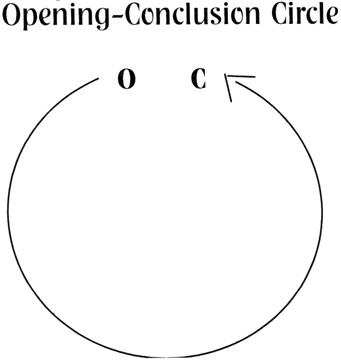Westside Toastmasters is located in Los Angeles and Santa Monica, California
A Quartet of Quintessential Elements for a Strong Conclusion
There are four essential elements that go into constructing an effective conclusion:
-
Never say "in conclusion...." It's not necessary to announce your intention to conclude. If people get a lot of advance warning that you are going to conclude, they wind up your speech in their mind and start to tune you out. Be more subtle: Lead into your conclusion with a creative transition instead of the not very dynamic "and so, in conclusion, I would like to point out...." It's better to use a word such as summary—then all the people who haven't been paying attention perk up and listen to hear what they've missed.
The best way to regain the audience's attention and lend greater credibility to your message is to use this phrase (or paraphrase this phrase): "The most essential points, the ones that will benefit you most, are...." The more important people think the message is, and the more meaningful to them, the more they will hang on your every last word.
A good conclusion needs a lot of energy: It may be a stirring statement, a joke, a call to action. Some conclusions try to motivate through a challenge issued directly to the audience.
I once heard an executive outlining new organizational changes after a takeover. Predictably, the members of his audience were nervous, and rumors of layoffs were rampant. He described the changes and ended his presentation by saying, "I dare you to come in tomorrow, to put aside your fears and apprehensions and to give your all." That direct challenge to the unspoken reservations the members held roused them and let him end on a strong, memorable, and positive note.
-
Construct your speech in the form of a circle. Referring back to your opening comments ties your whole speech together. Your audience sees your talk as a satisfying whole rather than a series of points without any particular direction.
I once heard an executive conclude simply—and very effectively—with her opening words: "Now really is the time for all good people to come to the aid of their company." Opening statements often refer to the purpose of the talk, and conclusions that return to and reinforce that purpose can make effective endings. A speech on customer service started with the advice to treat the customer the way you would want to be treated and ended with the speaker asking the members of the audience to think back and remember how they felt when they were customers and were treated rudely.
Most people who give technical talks—the ones who base their presentations on a series of slides—end badly. They simply present their last bit of information on a slide and never have a conclusion at all.
-
Reenergize yourself, and your audience, with a strong, memorable conclusion. Don't rush to the end. To make the greatest impact, your ending should be vocally strong and verbally colorful. Use persuasive language and vivid imagery so that your audience has a clear memory of your presentation and your message.
-
Use the two-conclusion strategy. One mistake that many speakers make is to end their presentation with a strong conclusion, and then take questions from the audience. After the last question, the speaker might say, "No more questions? Goodnight then." What does the audience go out remembering? What they heard last, which means they remember the last question and answer. That's not always a good thing, especially if the question was one that stumped you or that someone else in the audience answered for you.
So if you're taking questions at the end of your presentation, be sure you have a second powerful conclusion to use after the last question has been answered.




